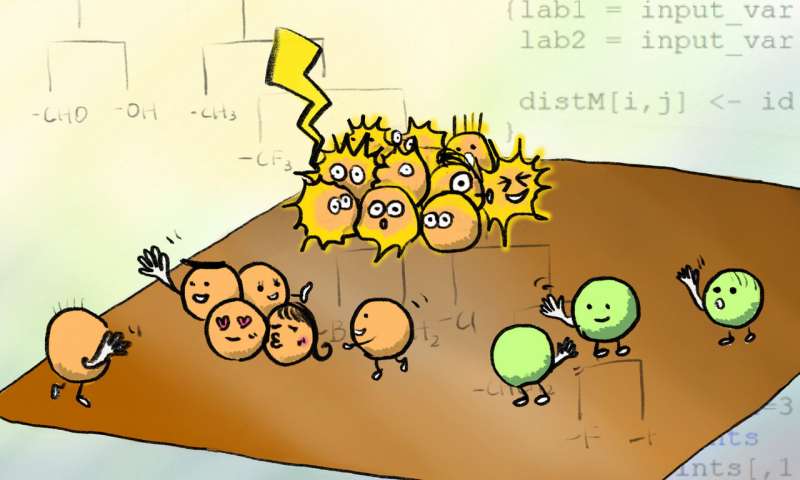A new approach could help materials scientists identify the appropriate molecules to use in order to synthesize target nanomaterials. The method was developed by Daniel Packwood of Kyoto University’s Institute for Integrated Cell-Material Sciences (iCeMS) and Taro Hitosugi of the Tokyo Institute of Technology. It involves connecting the chemical properties of molecules with the nanostructures that form as a result of their interaction. A machine learning technique generates data that is then used to develop a diagram that categorizes different molecules according to the nano-sized shapes they form.
Fabricating nanomaterials using a bottom-up approach requires finding precursor molecules that interact and align correctly with each other as they self-assemble. But it’s been a major challenge knowing how precursor molecules will interact and what shapes they will form.
Bottom-up fabrication of graphene nanoribbons is receiving much attention due to their potential use in electronics, tissue engineering, construction, and bio-imaging. One way to synthesize them is by using bianthracene precursor molecules that have bromine functional groups attached to them. The bromine groups interact with a copper substrate to form nano-sized chains. When these chains are heated, they turn into graphene nanoribbons.
Packwood and Hitosugi tested their simulator using this method for building graphene nanoribbons.
The model uses data about the chemical properties of a variety of molecules that can be attached to bianthracene to functionalize it and facilitate its interaction with copper. The data went through a series of processes that ultimately led to the formation of a dendrogram.
This showed that attaching hydrogen molecules to bianthracene led to the development of strong one-dimensional nano-chains. Fluorine, bromine, chlorine, amidogen and vinyl functional groups led to the formation of moderately strong nano-chains. Trifluoromethyl and methyl functional groups led to the formation of weak one-dimensional islands of molecules, and hydroxide and aldehyde groups led to the formation of strong two-dimensional tile-shaped islands.

Molecules interact and align with each other as they self-assemble. This new simulation enables to find what molecules best interact with each other to build nanomaterials, such as materials that work as a nano electrical wire. Image: Izumi Mindy Takamiya
The information produced in the dendogram changed based on the temperature data provided. The above categories apply when the interactions are conducted at -73°C. The results changed with warmer temperatures. The researchers recommend applying the data at low temperatures where the effect of the functional groups’ chemical properties on nano-shapes are most clear.
The technique can be applied to other substrates and precursor molecules. The researchers describe their method as analogous to the periodic table of chemical elements, which groups atoms based on how they bond to each other. “However, in order to truly prove that the dendrograms or other informatics-based approaches can be as valuable to materials science as the periodic table, we must incorporate them in a real bottom-up nanomaterial fabrication experiment,” the researchers conclude in their study published in the journal Nature Communications. “We are currently pursuing this direction in our laboratories.”
Source: Kyoto University




